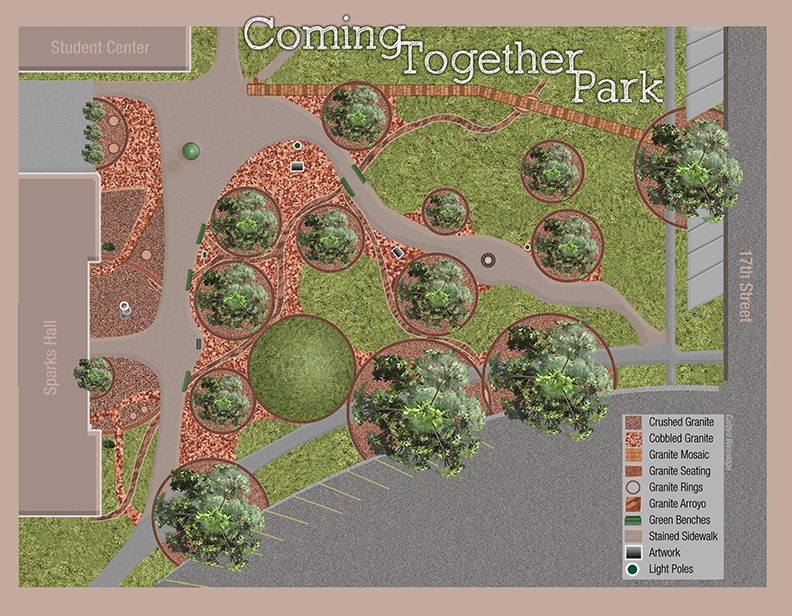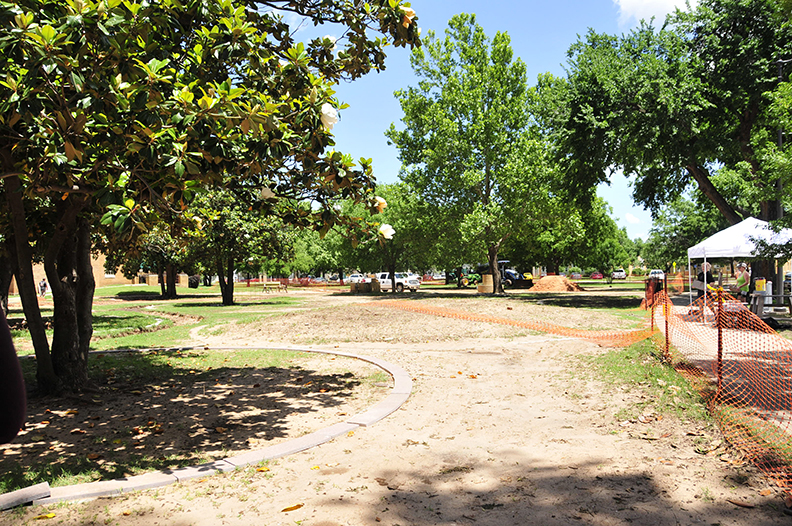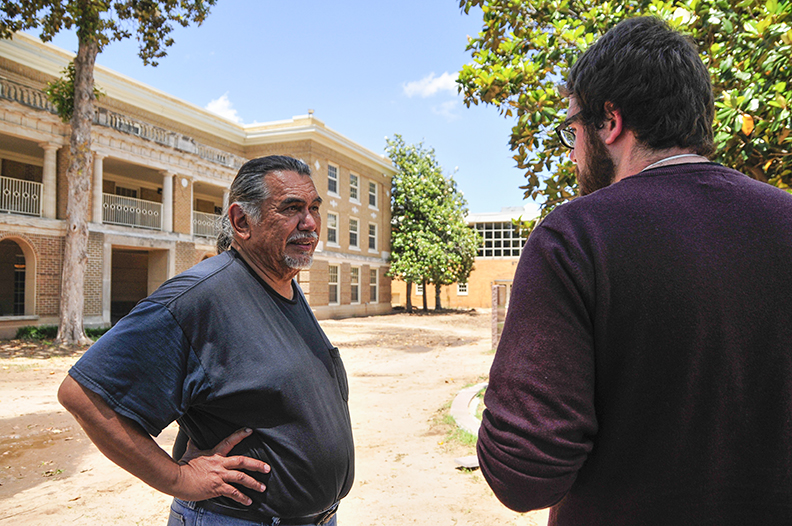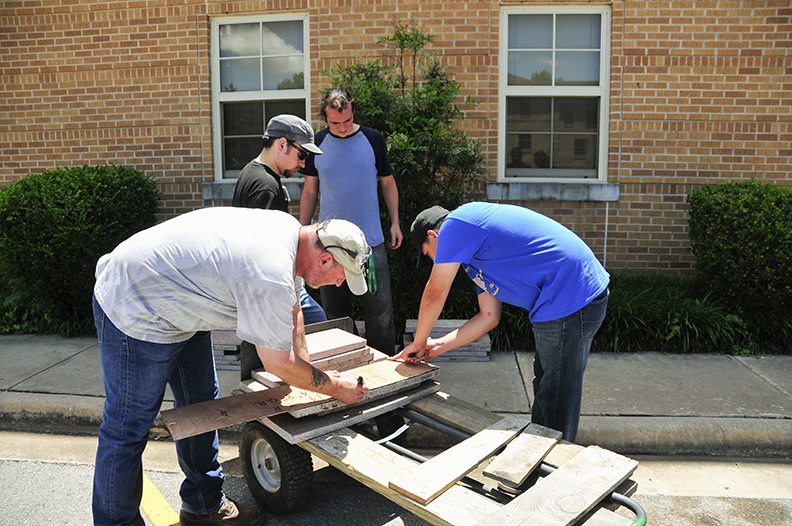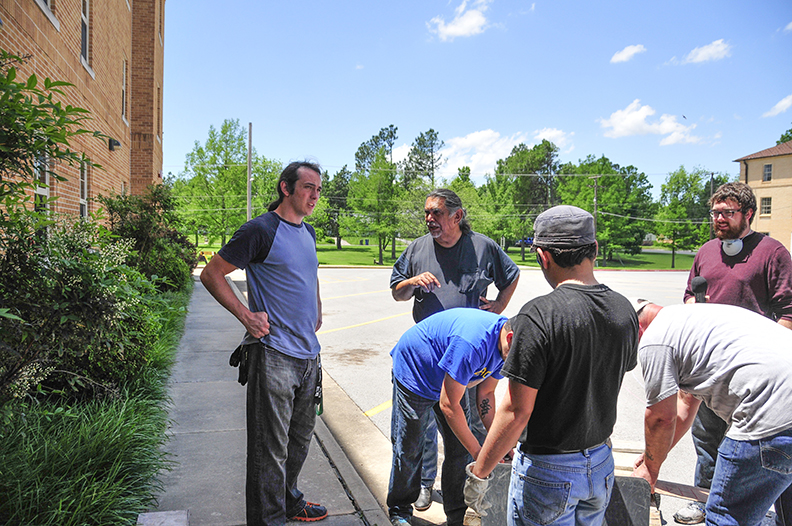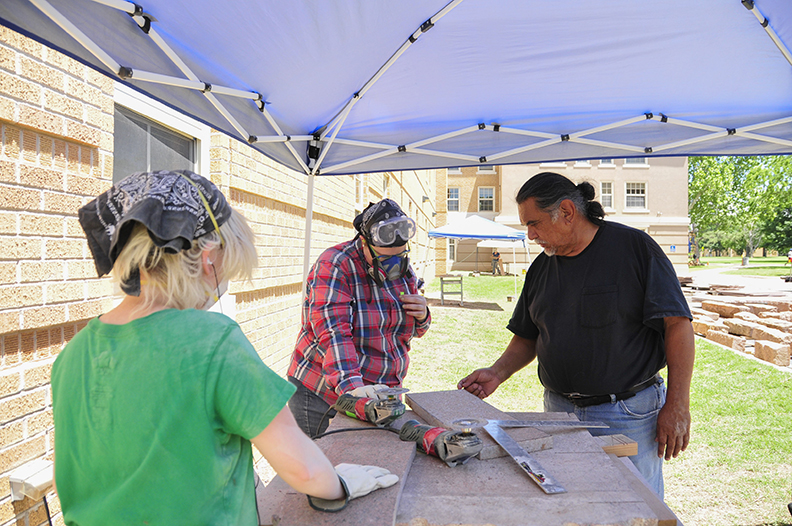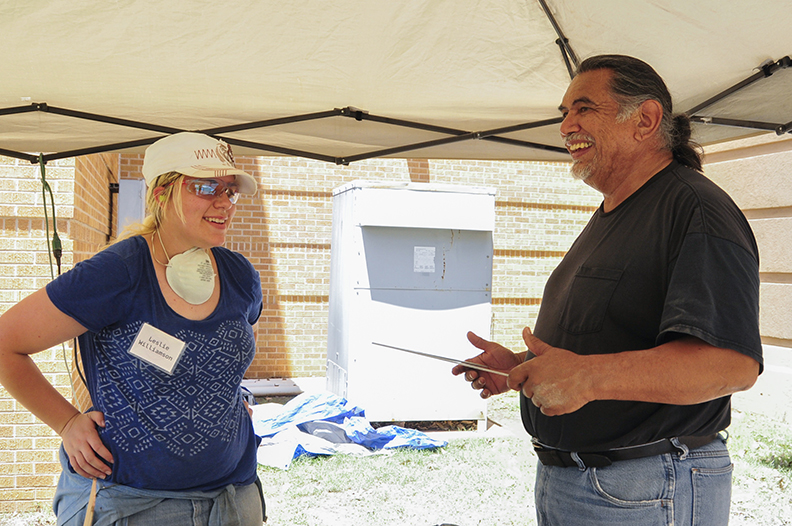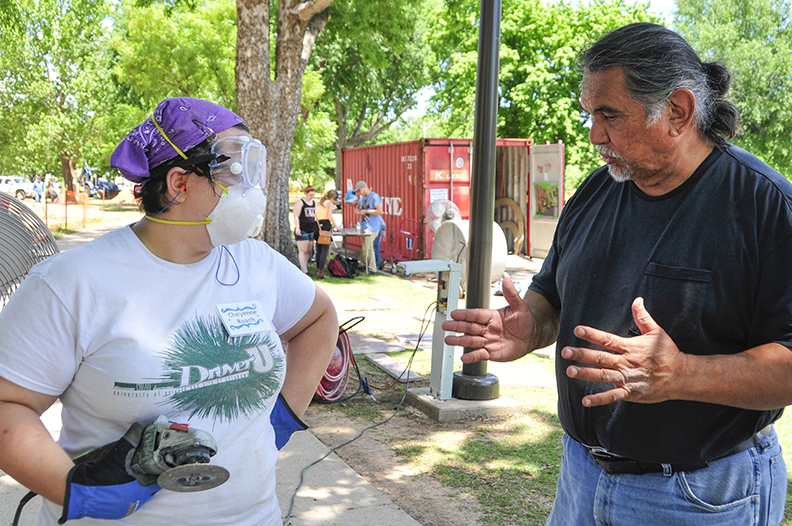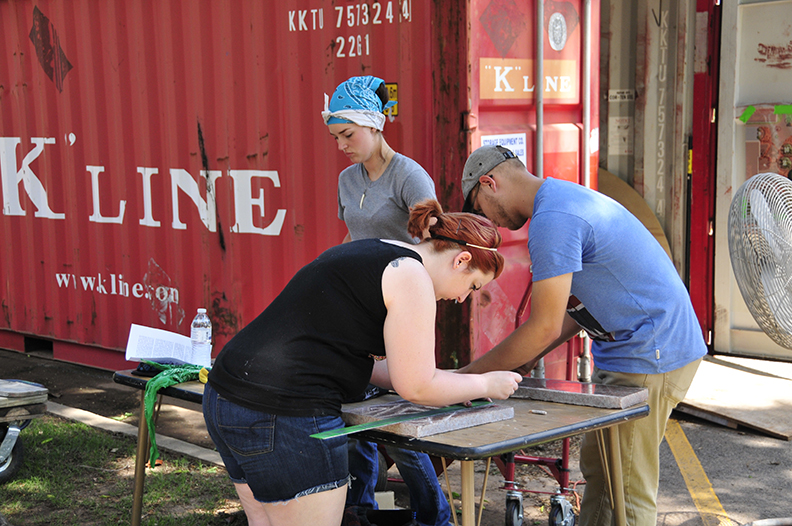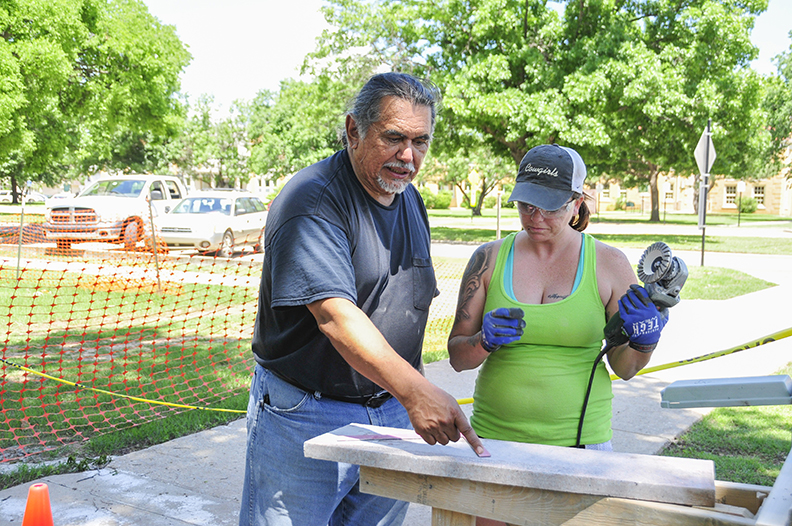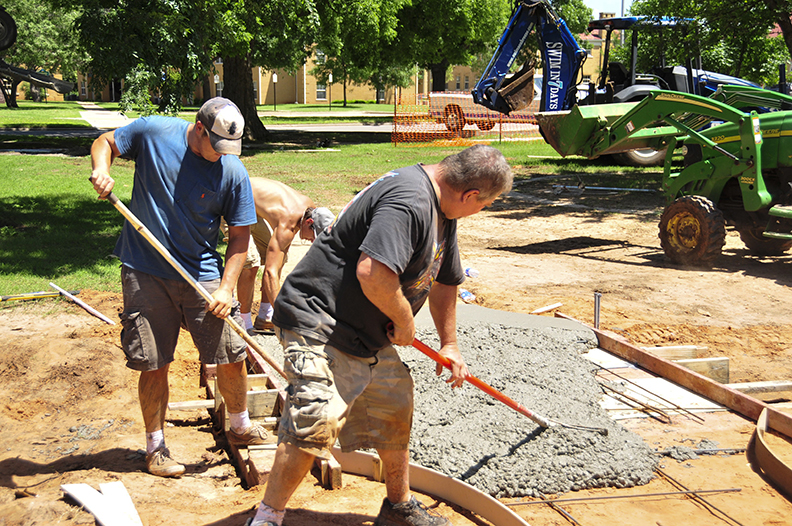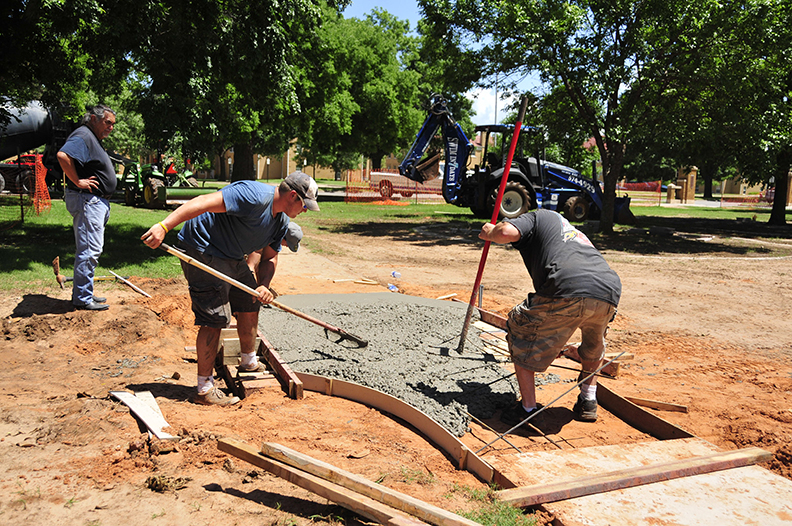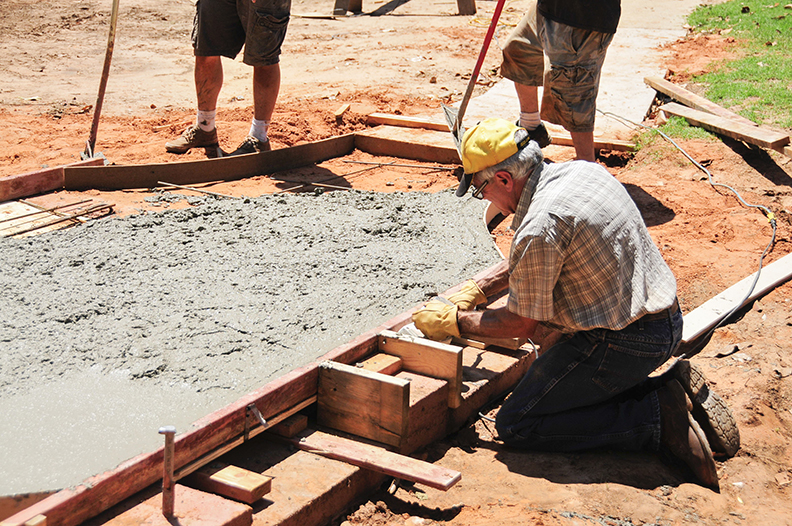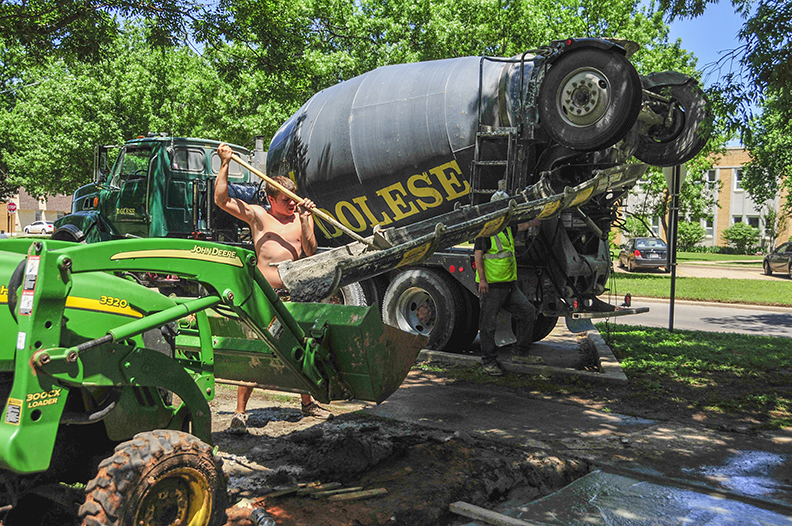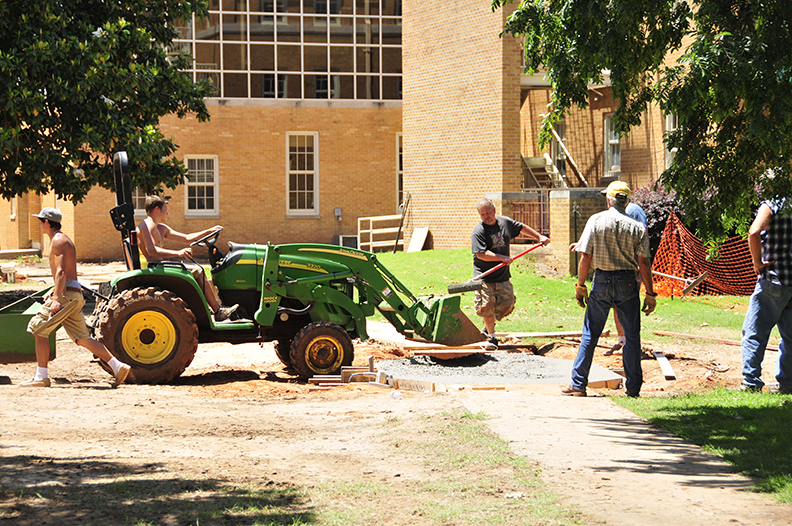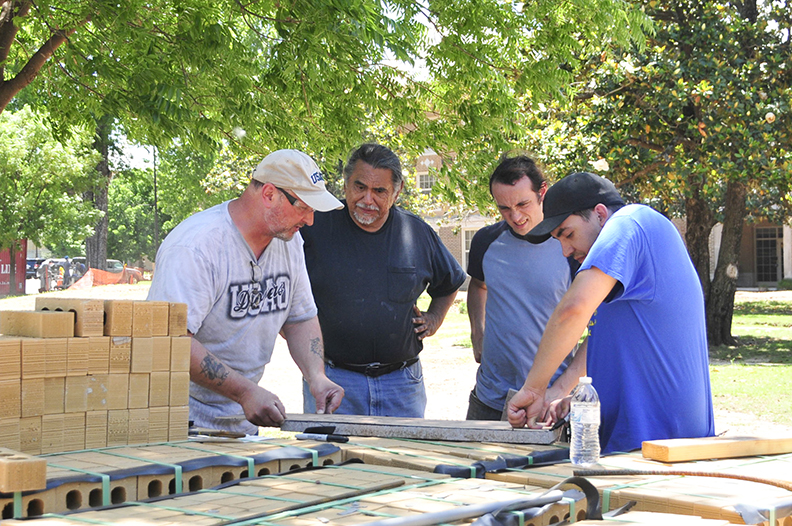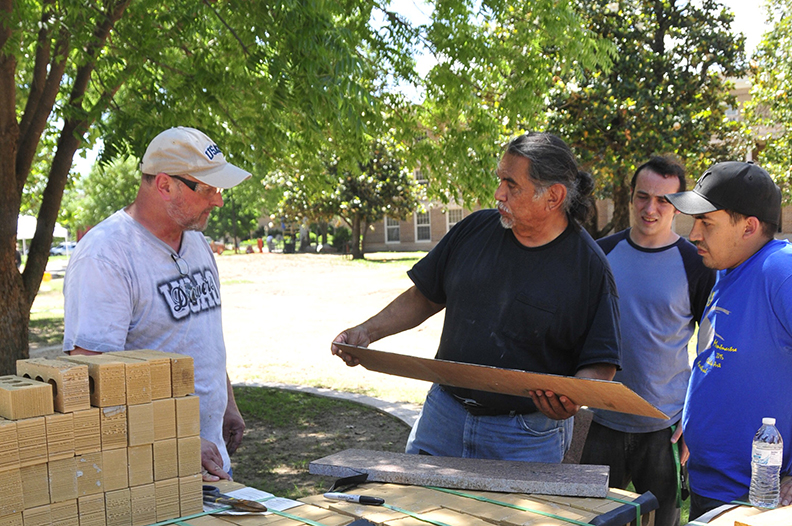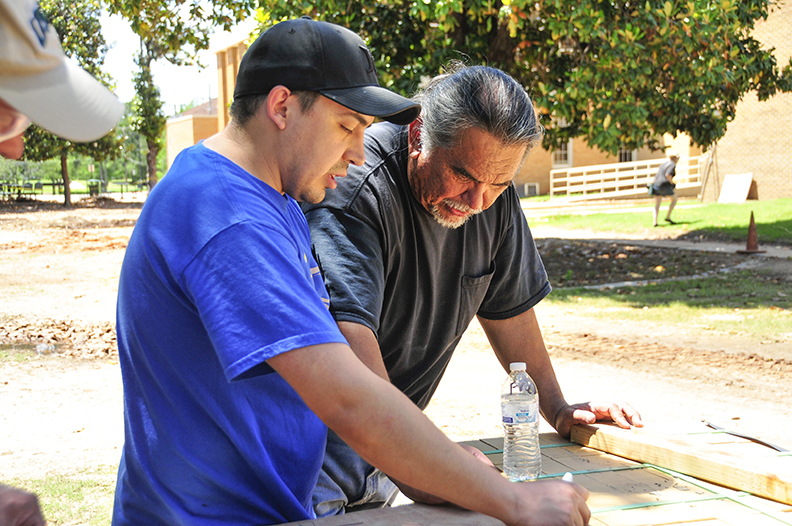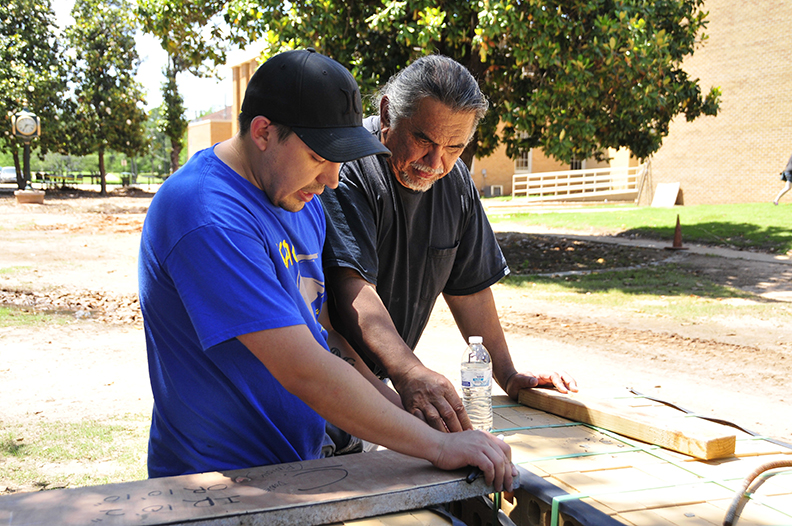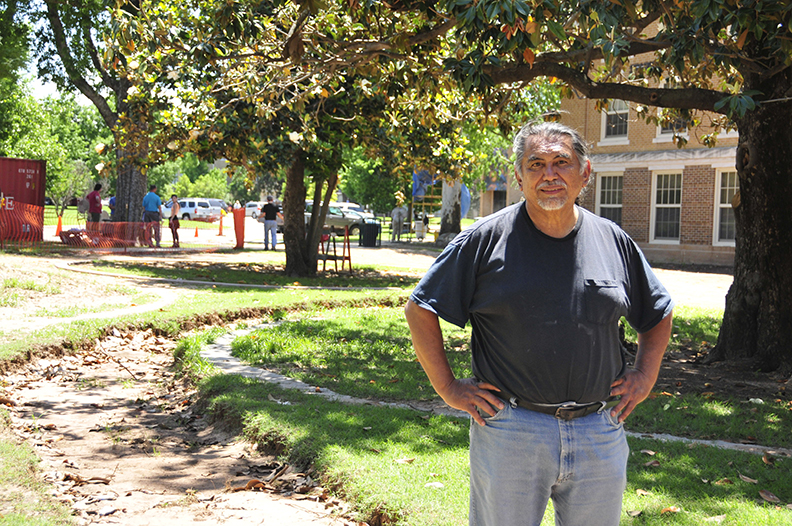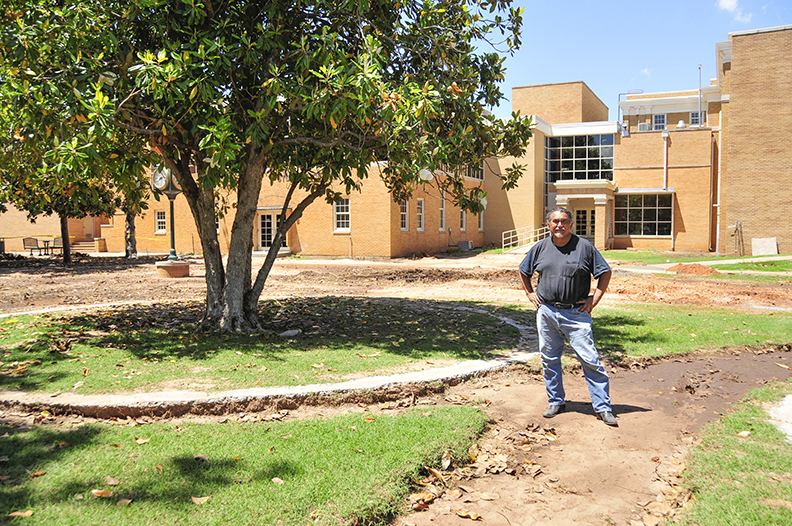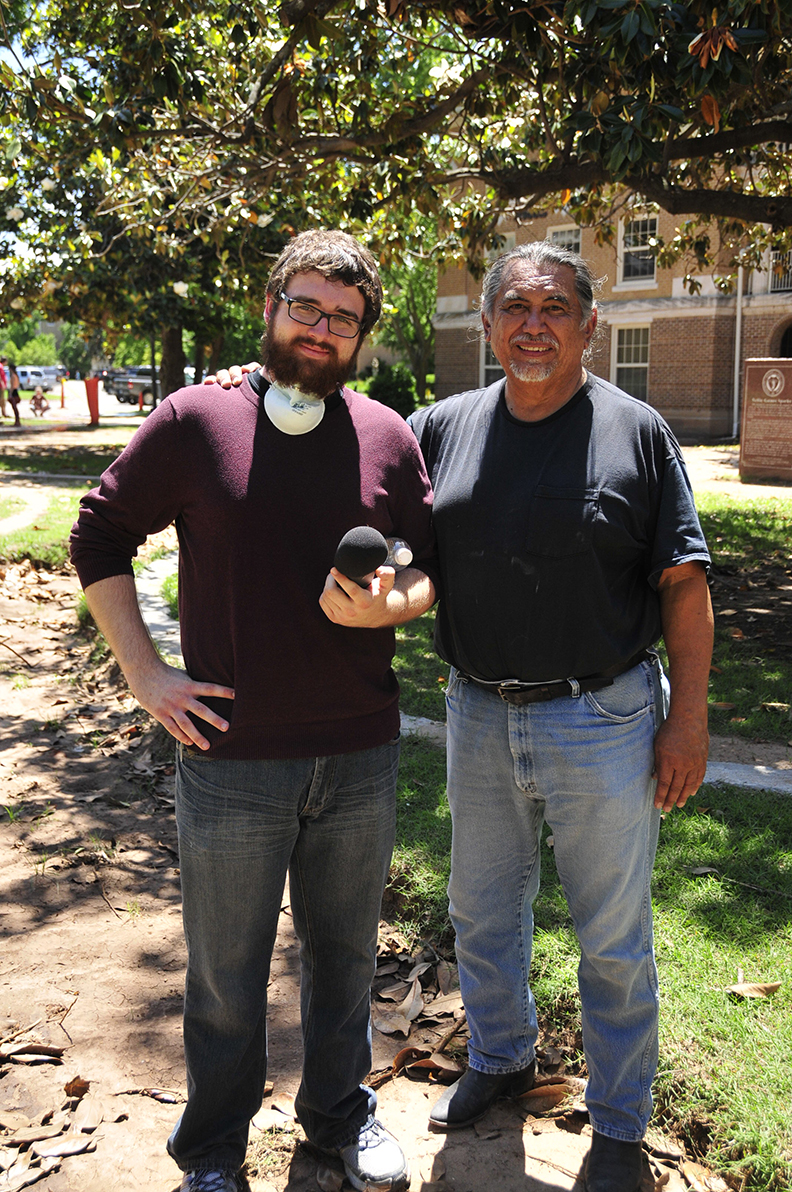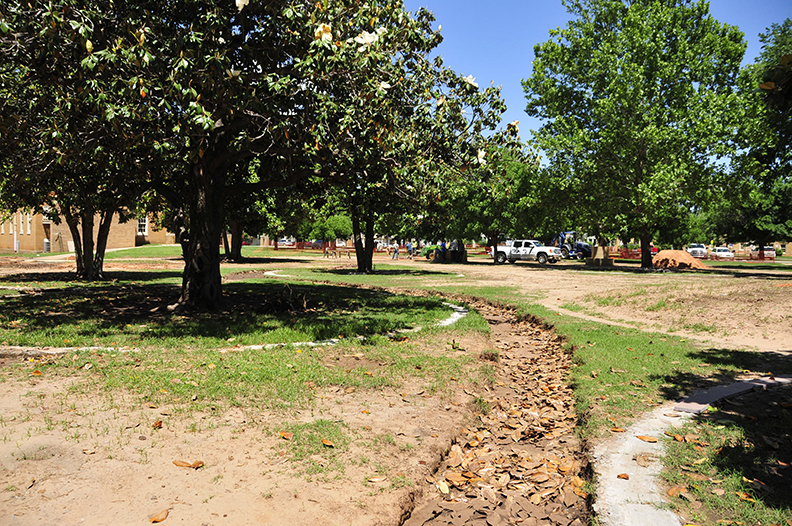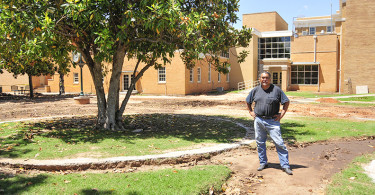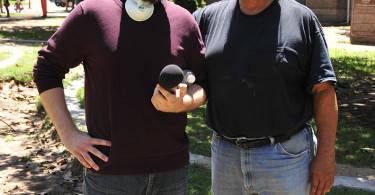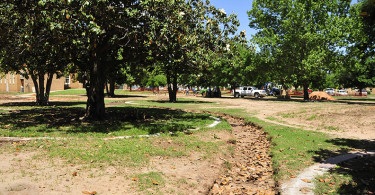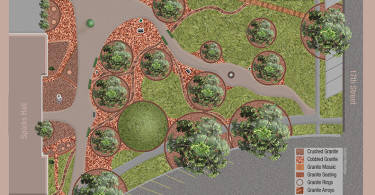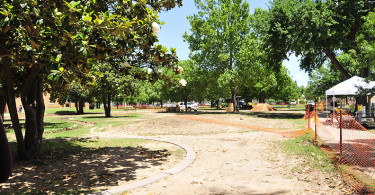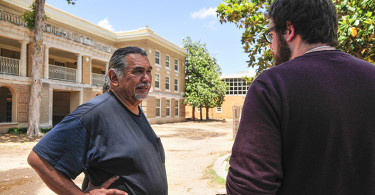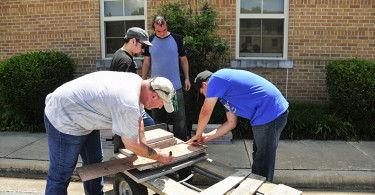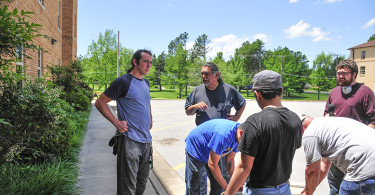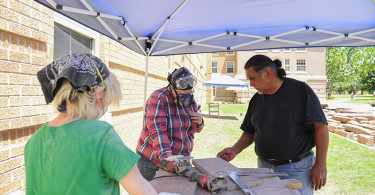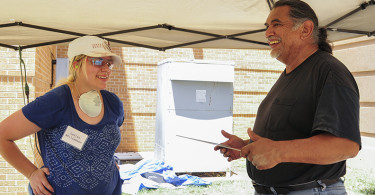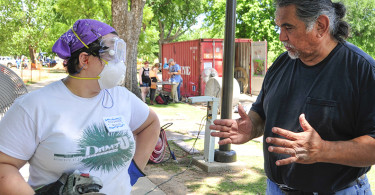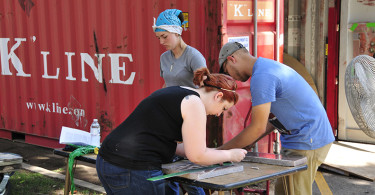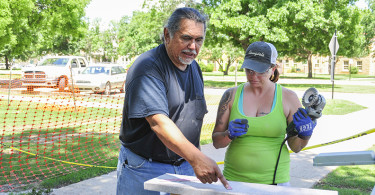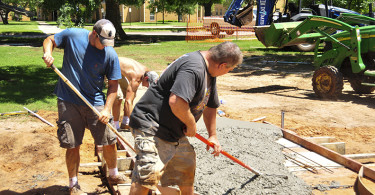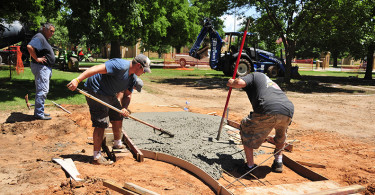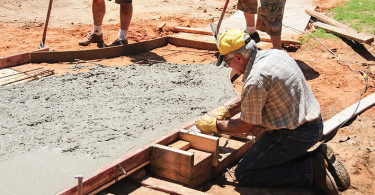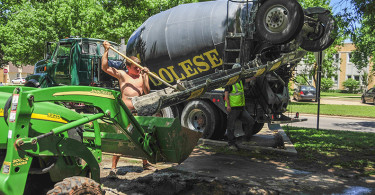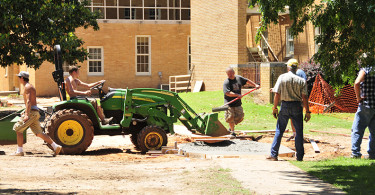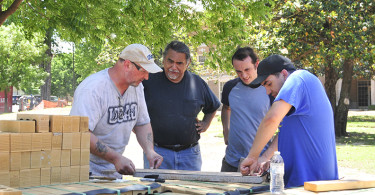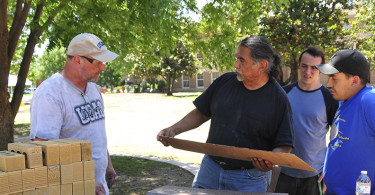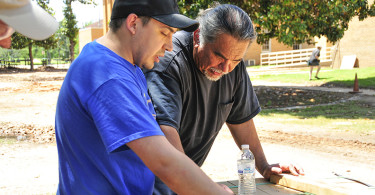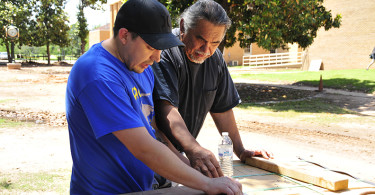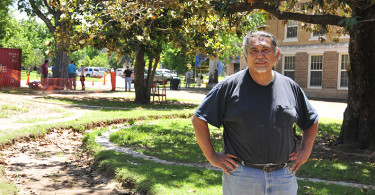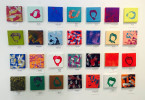Moroles has taken a lifelong stroll through the trail of mortality. He marveled at his broken nose and the scars that populated his hands. Still, even the most careful of sculptors must weave around a nearly unavoidable and invisible threat spawned from the ordeal: granite dust.
“I’ve inhaled so much of it that I’ve developed silicosis,” Moroles said. “Nobody is immune.”
We eventually stumbled upon Nesbitt Gallery Director Layne Thrift, an assistant professor of art and gallery manager at the campus. Working closely with a group of students, Thrift spoke on the amount of work required while he held a portion of a granite ring steady.
“Right now, we start at nine in the morning and finish at around three,” Thrift said. “Six hours a day, Monday through Friday. It equates to about five credit hours of independent study.”
Despite the intensity, students have readily risen to the occasion. The work seems to have hardened them, even this early, so much that Thrift mused about the institution soon housing “800-pound gorillas.” But the students’ adamancy should come as no surprise, as the university requires one of the highest entry requirements in the state.
As USAO is strictly an undergraduate facility, the amount of schooling and production a single student can experience, however rigorous, may at times seem a bit limited. The artist-in-residence program may change all of that.
“Graduate work pales in comparison to something like this,” Thrift continued. “It’s really a huge accomplishment to do something this big and at this scale, to work with a sculptor as renowned as Jesús.”
Programs such as this seek to illuminate the heart of the school. In other words, the liberal arts curriculum yields individuals of numerous trades spanning multiple majors.
“It doesn’t matter what discipline you assume,” Thrift said. “You’re kind of all of them once you graduate.”
Just as the park seeks to unite members of the community, the university seeks to unite ideas. Being one of only three schools to possess a statewide mission in the higher education system, the success and prevalence of this program is momentous.
Near the end of our journey, Moroles emphasized the prevalence of art in nearly every facet of society.
“This is the foundation for everything,” he said. “So many people say, ‘we don’t need art.’ But there’s nothing that wasn’t designed by an artist. This measure, that backpack, your glasses, everything. ‘We don’t need art.’ What? What?! That’s crazy.”
Moroles surveyed the work, the student, and the passing administrators from a distance. Afterward, he departed with a final axiom.
“I think art is life,” he stated. “I think when you die, you quit doing art. If you live the life of an artist, everything you do is about art. You’re always looking, always investigating, and always thinking of the next thing to do. We pretty much do that until we finally run out of gas.”
Moroles will continue to work closely with the campus for the duration of the summer, with the completion of the park expected in August. There are several days planned for the Oklahoma community to participate in the work, but the dates have yet to be publicly announced.

